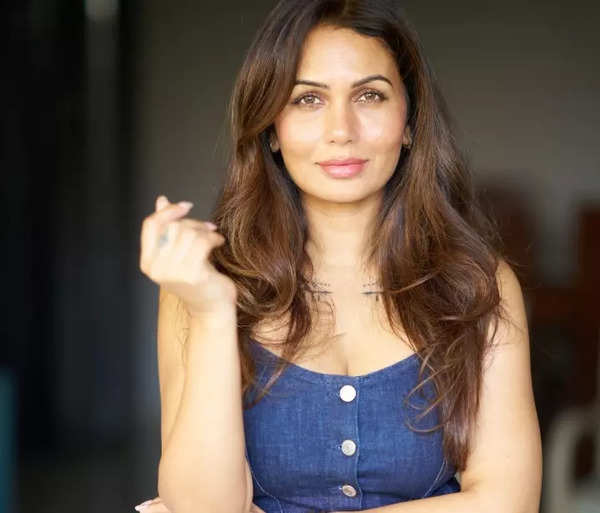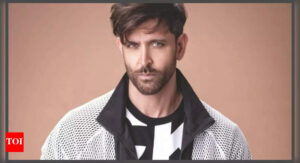From Aamir Khan’s beard to Karisma Kapoor’s flicks: How 90s and 2000s Bollywood hairstyles became National trends before Social Media | Hindi Movie News

Before influencers and algorithms, India found style inspiration on the silver screen. These iconic Bollywood hairstyles weren’t just trends—they were emotions etched in memory.
There was a time in India when cinema wasn’t just entertainment—it was everything. It was our mirror, our muse, our dreamscape. The actors on screen weren’t distant celebrities—they felt like family. Their joys were our joys; their heartbreaks were ours. And their hair? Oh, their hair told stories our hearts still remember.
Before hashtags ruled fashion and stylists became stars, hairstyles emerged not from reels but from real life—from characters who lingered long after the credits rolled. In those golden years of the 1990s and early 2000s, Bollywood hairstyles weren’t just about looks—they were about identity, emotion, and silent rebellion.
Aamir Khan’s Beard in ‘Dil Chahta Hai’
It was the year 2001. Enter Aamir Khan in ‘Dil Chahta Hai,’ with a neatly trimmed goatee that redefined masculinity. This wasn’t the loud, rugged beard of a macho man—it was polished, minimal, and sophisticated. It whispered rather than shouted.
In college canteens and metro coffee shops, mirrors became grooming grounds for young men. That ‘Aamir beard look’ became synonymous with suave confidence. For the first time, Indian men embraced subtlety as a style.

Celebrity stylist Suvidhi Jain shares, “Hairstyles and beards have always been a powerful way to define a man’s style, with pop culture fueling trends that men eagerly embrace. In the ’90s and 2000s, figures like Aamir Khan and Sanjay Dutt set trends that became instantly iconic.”
Sanjay Dutt’s Long Hair
In the early 90s, Sanjay Dutt’s long, untamed hair in ‘Saajan’ and ‘Khalnayak’ wasn’t just a hairstyle—it was a revolution. It carried with it a whiff of danger, freedom, and defiance. It was everything a restless generation wanted to be.Across India, barbers were handed magazine clippings and posters: “Bhaiyya, Sanjay Dutt jaisa chahiye.” Parents worried, school principals frowned—but young boys felt empowered. That flowing mane wasn’t just about fashion. It was freedom, in layers and waves.
“Fast forward to 2025, and we see a shift towards embracing natural textures and bold statements. Kunal Kemmu’s modern mullet, Ishaan Khatter rocking his natural curls, and Anuv Jain’s effortlessly cool look are leading the charge. Men today are more confident than ever in showcasing their unique hair,” Suvidhi Jain adds. “Men’s grooming is no longer just about following a trend—it’s become a powerful means of self-expression.”
Salman Khan’s ‘Tere Naam’ Hair
In 2003, Salman Khan appeared in ‘Tere Naam’ with a dramatic curtain-style haircut that instantly caught fire. With long hair parted down the middle and falling over his face, the look was brooding, tragic, and deeply romantic.
It wasn’t just a style—it became an identity. Boys from metros to small towns started growing their hair out, braving criticism and mimicry, just to carry a piece of Radhe’s melancholy. For many, it was the first time a hairstyle felt like an emotional statement.
Karisma Kapoor’s Flicks
In a time when style meant simplicity, Karisma Kapoor’s front flicks from ‘Raja Hindustani’ and ‘Dil To Pagal Hai’ became every schoolgirl’s dream. Those perfectly curled tendrils grazing the forehead were playful, romantic, and effortlessly cool.

Celebrity makeup and hair expert Nishi Singh says, “Karishma made the “front flick” or “one-sided fringe” extremely popular. Women everywhere started asking their hairdressers for ‘Karishma wali flicks.’ Seen in movies like Raja Hindustani and Coolie No. 1, it became the go-to style for teens and college girls.”
Madhuri Dixit’s Blow-Dried Hair
If grace could be bottled, it would look like Madhuri Dixit’s blow-dried waves. In films like ‘Hum Aapke Hain Koun..!’, her hair floated with rhythm and romance. It wasn’t just styled—it danced.
“Voluminous curls or blow-dried curls seen in Hum Aapke Hain Koun…! gave a romantic, glamorous vibe and were widely copied at weddings and formal events,” adds Nishi Singh. “It was a signature look for the era.”
Every woman—from homemakers to brides—wanted the “Madhuri blow-dry look.” It wasn’t just a hairstyle; it was a standard of beauty. Soft. Regal. Eternal.
Nandita Das and Shabana Azmi’s bald look for ‘Water’
Not all hairstyles were about glam. Sometimes, they were about grit. When Nandita Das and Shabana Azmi shaved their heads for ‘Water,’ it shook the nation. Their bald look wasn’t about beauty—it was about truth.
They didn’t spark a trend, but they sparked respect and a deep, contemplative silence. In a world obsessed with appearances, they reminded us that real beauty lives in conviction.
The Golden Age of Bollywood Hairstyles
Over the years, many Bollywood celebrities have spoken about how their hairstyles shaped trends and identities. Sadhana’s iconic fringe, inspired by Audrey Hepburn, became a national rage in the 60s, while Sharmila Tagore’s voluminous beehive hairdo set new beauty standards. Shahid Kapoor called shaving his head for Haider one of his boldest decisions, made in pursuit of authenticity. Manoj Bajpayee did the same for Gangs of Wasseypur, proving that sometimes style is about surrendering to character. Kajol, known for her effortless charm, often embraced simple, natural hairstyles—making minimalism aspirational. Each of these looks told a story, shaping not just their on-screen personas, but an era’s sense of beauty.
In those pre-Instagram days, there were no tutorials, no filters—only film stars and their silent power over the nation. Hairstyles traveled from cinema halls to wedding functions, from Filmfare covers to local beauty salons. They were absorbed, admired, and adored—because they meant something.A hairstyle wasn’t a bid for attention.It was a connection. A tribute. A whisper of aspiration.People didn’t follow their favorite Bollywood stars for likes or clout. They did it to feel a little closer to them. To wear a sliver of their magic. To say, “I see you. I believe in you. I want to be a little like you.”Today, style changes every scroll. Trends fade before they even rise. But back then, a single hairstyle could last a season—or a lifetime. It wasn’t fast fashion. It was forever fashion.








